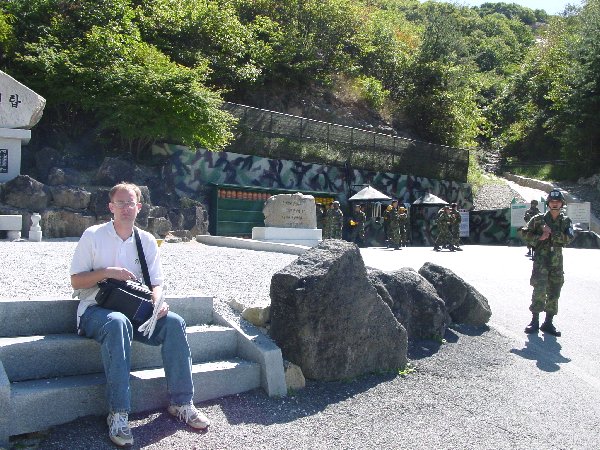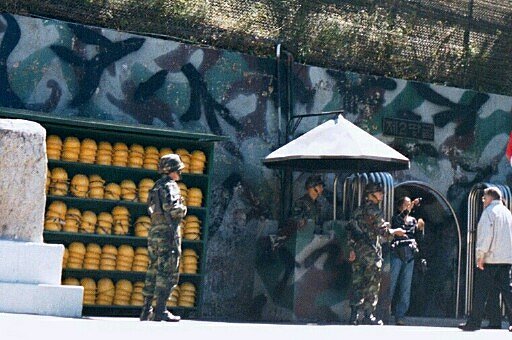
Tunnel Number 2
Are we the kind of people who would exploit local customs to circumvent nonsensical rules? Yes we are. The ROK Army doesn't allow pictures taken of the area. When I moved over to get a picture of the tunnel entrance, the soldier motioned me back over. But he just couldn't bring himself to correct my father on account of his age, which is very much respected in Korea. On our final day in Korea I picked up a brochure for Tunnel Number 3. It had a picture of the entrance and a picture from inside.
The monument to the left is for the eighteen ROK soldiers who were killed by booby traps when the tunnel was discovered. The entrance to the tunnel is toward the right, between the two guardhouses. This is actually the entrance to the South Korean tunnel which was dug to intercept the North Korean invasion tunnel. Both the invasion tunnel and South Korean interception tunnel are in the "demilitarised" zone, which both side have infringed upon.
During the 1970s, each North Korean divisional commander was ordered to dig an invasion tunnel under the DMZ. Defectors tipped off the South to their existence. Four have been discovered, and some of them are open to the public. The South Korean govenment has published photos of soldiers running three abreast with packs through the tunnel and have claimed that an enormous number of troops could pass during an invasion. We found that walking single file with people returning the other direction was challenging enough, and being as that the intended exit couldn't have been very deep into the South, the tunnels would have been of questionable use.

Our picture.

A good zoom taken by Jack Johnson, a Korean War veteran and member of our tour group. You can see the hard hats which western visitors are required to wear on account of their greater height.
Continue to From Tunnel Number 2 Toward Chorwon